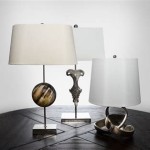Interior Trim Paint Finish: A Comprehensive Guide
Interior trim paint finish is a crucial aspect of interior design as it significantly impacts the overall aesthetic appeal and ambiance of a space. Interior trim, encompassing elements like baseboards, window and door casings, crown molding, and wainscoting, serves as a visual framework that defines the boundaries and enhances the architectural features of a room. Choosing the right paint finish for these elements is essential to complement the style, color scheme, and functionality of the space. This article delves into the various interior trim paint finishes, exploring their characteristics, applications, and considerations for selecting the best option for your needs.
Types of Interior Trim Paint Finishes
Interior trim paint finishes are broadly categorized into three main types: flat, satin, and gloss. Each finish possesses unique properties that influence its appearance, durability, and cleaning ease. Understanding these distinctions is crucial for making informed decisions about the best finish for specific areas and styles.
Flat Finish
Flat paint finishes are characterized by their lack of sheen or gloss. They provide a matte, velvety appearance, ideal for creating a subtle, understated look. Flat finishes are adept at concealing imperfections on the trim, making them suitable for surfaces with minor flaws. However, their lack of durability and susceptibility to stains make them less desirable for high-traffic areas or spaces prone to spills and dirt. Flat finishes are often preferred in traditional or rustic settings, where a soft, muted aesthetic is desired.
Satin Finish
Satin finishes strike a balance between flat and gloss finishes, exhibiting a subtle sheen that imparts a soft, elegant look. They offer a slightly more durable and washable surface compared to flat finishes, making them suitable for areas with moderate traffic and potential for occasional spills. Satin finishes are highly versatile and can complement both modern and traditional styles, adding a touch of sophistication without being overly shiny. They are a popular choice for trim in living rooms, dining rooms, and bedrooms.
Gloss Finish
Gloss finishes possess the highest sheen level, resulting in a highly reflective surface that adds a dramatic and polished effect to the trim. They are the most durable option, offering excellent resistance to stains, scratches, and moisture. Gloss finishes are ideal for high-traffic areas like kitchens, bathrooms, and mudrooms, where frequent cleaning and durability are essential. They are also commonly used for accent trim or molding, enhancing the prominence of specific architectural features. However, their highly reflective surface can accentuate imperfections on the trim, requiring meticulous preparation for optimal results.
Choosing the Right Interior Trim Paint Finish
The selection of an interior trim paint finish is influenced by a combination of factors, including:
Style
The overall style of the interior plays a vital role in determining the appropriate paint finish for trim. Traditional styles often favor flatter finishes that create a timeless and understated look, while modern interiors may opt for a glossier finish to add a touch of sophistication and contemporary flair. The paint finish should complement the existing furniture, light fixtures, and overall design scheme.
Traffic Level
The frequency of use and potential for wear and tear in a specific area are important considerations. High-traffic areas, such as hallways, kitchens, and bathrooms, benefit from durable finishes like satin or gloss that can withstand regular cleaning and resist stains. Conversely, low-traffic areas like guest rooms or formal dining rooms can handle a flatter finish without compromising their appearance.
Light Conditions
The amount of natural and artificial light in a space can affect the perception of the paint finish. In rooms with ample natural light, gloss finishes can reflect light and create a brighter, more energetic ambiance. Conversely, in dimly lit spaces, flatter finishes may be more suitable to avoid harsh reflections and create a cozy and inviting atmosphere.
Beyond the Basics: Other Factors to Consider
In addition to the basic characteristics of flat, satin, and gloss finishes, several other factors can influence your paint selection:
Color
The choice of trim color can significantly impact the overall feel of a space. Lighter colors can make a room appear larger and brighter, while darker colors can create a more intimate or dramatic effect. The color of the trim should harmonize with the wall color and furniture to create a cohesive look.
Paint Quality
Investing in high-quality paint ensures a durable and long-lasting finish. Premium paint brands often offer better coverage, adhesion, and fade resistance, resulting in a superior and more professional-looking outcome.
Priming
Properly prepping the trim with a primer is essential for ensuring a smooth, even finish. A primer helps to seal the surface, promoting adhesion and preventing the underlying wood from showing through the paint. Choose a primer that is compatible with the chosen paint finish and the specific type of wood being painted.
Interior trim paint finish plays a significant role in enhancing the visual appeal, durability, and overall ambiance of a space. Understanding the characteristics of different finishes, considering the style, traffic level, and light conditions of the area, and paying attention to color, paint quality, and priming helps to make informed decisions that create an aesthetically pleasing and functional result.

The Best Paint Finish For Trim Walls Ceilings More Morris Mansion

Paint Sheen Guide What Should You Use On Your Walls Trim Cabinets Etc Nadine Stay
The Best Paint Finish For Walls Ceilings Trims Doors More Kylie M Interiors

How To Paint Trim And Why Satin Is The Best Finish Our Aesthetic Abode

How To Paint Trim And Why Satin Is The Best Finish Our Aesthetic Abode

How To Paint Trim And Why Satin Is The Best Finish Our Aesthetic Abode

Best Trim Paint Colors Finishes

How To Choose The Best Paint Finishes For Interior Walls Simply Diy Home

Diffe Kinds Of Interior Paint Sheens Westworld Painting

The Best Trim Paint Brand And Type High Gloss Semi Or Satin Designed








